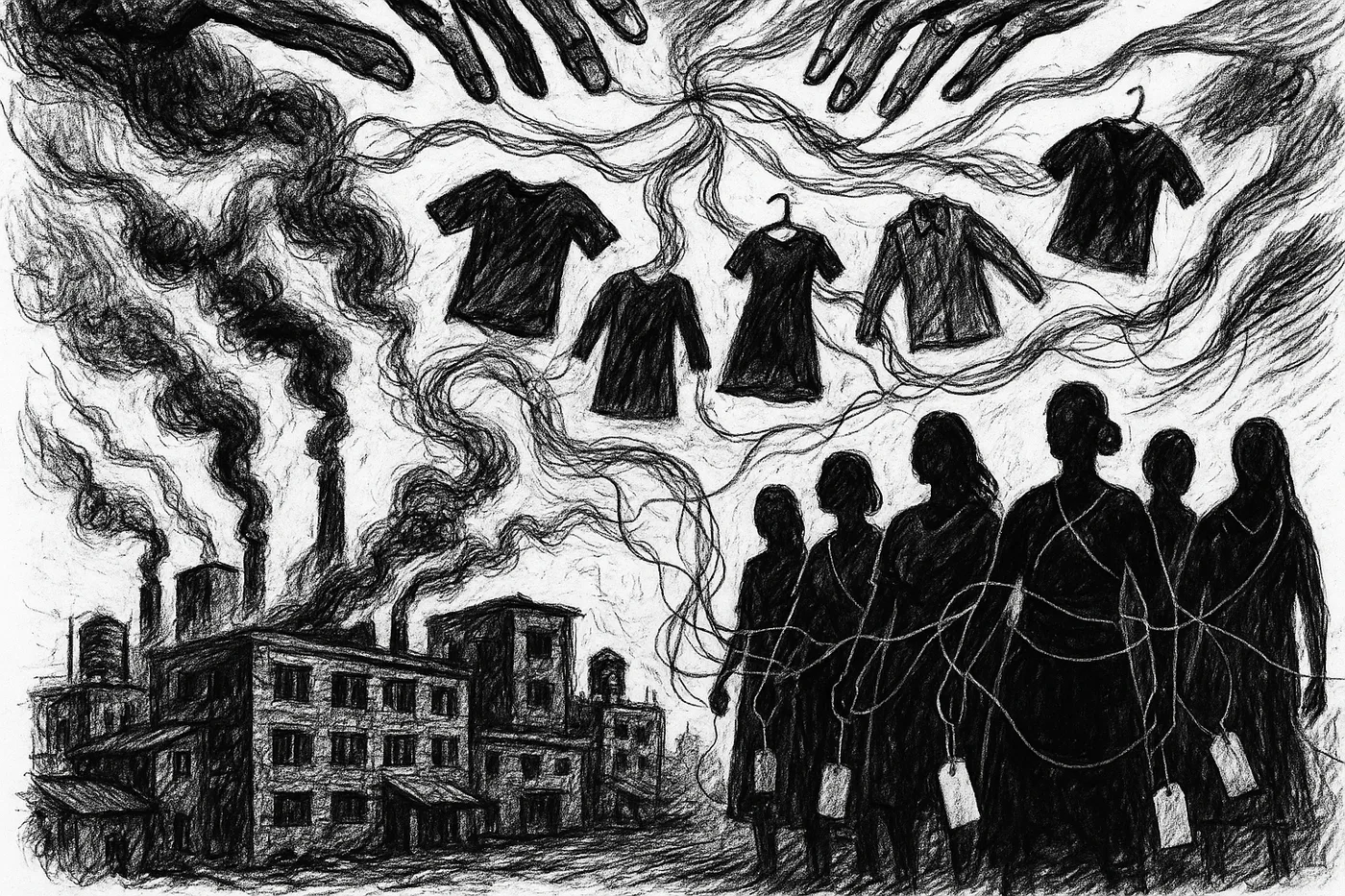TLDR: On October 14, 2025, a fire at a Dhaka garment factory killed at least 16 workers—mostly women—after flames from an illegal chemical warehouse engulfed the building. Despite Bangladesh’s $55 billion garment industry employing four million people (53-60% women earning roughly $200 monthly), post-Rana Plaza safety gains are backsliding. Global brands demanding rock-bottom prices and lightning turnarounds pressure suppliers to cut corners on everything from wiring to chemical storage. Meanwhile, workers—paid below living wages, denied basic protections—keep fighting for dignity. What if the $12 shirt in your cart helps fuel this cycle?
Picture this: You’re mid-shift at your sewing machine when an unfamiliar smell cuts through the factory air. Not fabric. Not dye. Smoke. Then flames, leaping from somewhere unseen, consuming everything. For workers in Dhaka’s Mirpur area on October 14, 2025, this wasn’t hypothetical—at least 16 people, including seven women, died after a garment factory fire exploded when it reached an adjacent unlicensed warehouse packed with bleaching powder and hydrogen peroxide. Twelve years after Rana Plaza’s collapse killed over 1,100 workers and forced global reckoning, how are we still here? This fire isn’t an isolated tragedy. It’s a warning flare from fast fashion’s underbelly, exposing eroded safety reforms, relentless brand pressure for cheap speed, and a human cost measured in lives, not profit margins.
A Pattern, Not a Freak Accident
The fire ignited on the factory’s third floor before consuming the neighboring warehouse, which authorities say operated without permits and stored flammable materials like hydrogen peroxide. While the exact cause remains under investigation, the context is damning. Over half a million garment workers faced job losses from factory closures in 2025, pushing many toward unsafe workplaces just to survive.
The very safeguards built to prevent this are crumbling. The Accord on Fire and Building Safety—a legally binding agreement that once forced brands to fund repairs in 1,600+ factories—transitioned in 2020 to the RMG Sustainability Council (RSC), giving factory owners more influence. Labor advocates warn this shift is causing “backsliding toward disaster,” with critical boiler inspections facing dangerous delays. Just last month, 30 workers were injured in a preventable boiler blast at a factory that had never been inspected. Numbers reveal systemic rot, but they miss the human pulse beating beneath.
Greed’s Hidden Threads
Let’s name what fuels this: the global appetite for cheap clothes produced at breakneck speed. When H&M, Walmart, and Inditex demand lower prices and faster deliveries, suppliers cut corners—unsafe wiring, locked exits, hazardous chemicals stored next door. After Rana Plaza, brands made promises. As profits rebounded, those promises faded.
The industry’s $55 billion in annual exports rests on four million workers, predominantly women earning 25% less than male colleagues—often as little as $75 monthly, far below minimum wage and nowhere near covering inflation. To keep supply chains opaque, brands rely on subcontracted workshops where oversight vanishes. In these hidden tiers, modern slavery and child labor flourish—an estimated 80% of mixed or export subcontracts harbor such abuses. It’s as if brands race TikTok trends so frantically they can’t slow down for safety upgrades while workers literally flee flames.
Resilience in the Wreckage
Behind statistics are millions of women who refuse to be erased. Consider Sokina, who survived the 2012 Tazreen factory fire where 112 died. Eleven years later, she told Amnesty International she’s still fighting for compensation while the factory owner operates freely with political connections. Her story echoes in 2023’s wage protests, where four workers died facing police violence.
The daily reality is brutal: 95% of factory workers earn below living wages, with 28% reporting forced labor conditions. They endure verbal and sexual abuse, denied maternity leave, and buildings where climate-driven heat affects 98% of the workforce. Yet they organize. They form unions despite threats of firing or assault. They demand dignity. One survivor of the October fire, shaken but resolute, reportedly told rescuers, “We knew the chemicals were there, but speaking up meant losing work.” This resilience—this refusal to accept disposability—is the story fast fashion doesn’t want told.
From Sympathy to Accountability
Sympathy rings hollow without action. Compensation cases from Rana Plaza and Tazreen remain stuck in legal purgatory, evidence of corporate impunity that endures. Hidden horrors persist: one in 15 garment workers is a child.
Real change demands more than voluntary codes. Bangladesh’s Labour Reform Commission is exploring how to replicate Accord standards across industries, but power lies with brands. They must sign legally binding agreements mandating human rights due diligence, like emerging EU regulations. And they must pay for safety—upgrading all Bangladesh factories costs an estimated $3 billion, a fraction of global fashion profits. With half a million workers displaced by closures, these reforms aren’t about preventing the next fire; they’re about building a humane future for an entire industry.
The embers in Dhaka will cool. But the fire this tragedy ignited in global consciousness must not fade. October 14th tore back fast fashion’s curtain again, exposing its fragile, flammable foundation. Yet in workers’ courage and growing worldwide scrutiny, there’s a blueprint for change. The question isn’t just how this happened—it’s what role you’ll play demanding brands finally value human lives over fleeting trends. Because every purchase is a vote. What are you voting for?

